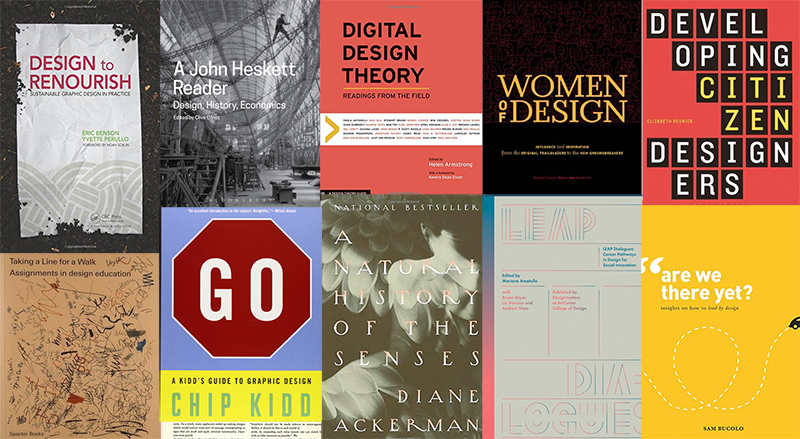
The AIGA Design Educators Community|Books
January 31, 2017
Required Reading
AIGA’s Design Educators Community list their must-have books for design inspiration for 2017
With the new year comes a new semester for design educators and students. This means they are surrounded by books, scraps of paper with scribbled notes from past conferences, previous assignments and syllabi, and other inspirational miscellany. To energize and support educators in this process, the members of the AIGA Design Educators Community steering committee (DEC) have compiled a list of books (a few oldies but goodies, a few fresh and new) that are sure to serve as creative fodder for both life-long learners and for educators arriving back at campus for a new term. — The Editors
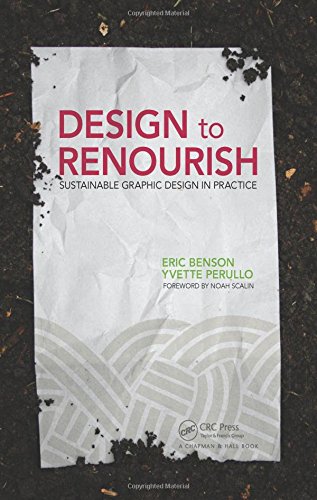 Design to Renourish: Sustainable Graphic Design in Practice by Eric Benson and Yvette Perullo
Design to Renourish: Sustainable Graphic Design in Practice by Eric Benson and Yvette Perullo
“Design to Renourish is a book for the graphic design professional that helps to integrate sustainability into their workflow through a design process called systems thinking. This process asks the graphic designer to approach a design problem by being more informed and aware of and influenced by the impacts that material and vendor choices have on one another, the planet, and consequently on us.”
— Editorial Review by Focal Press, published on Amazon
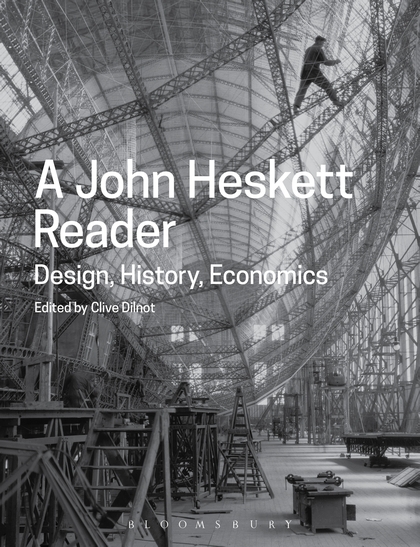 A John Heskett Reader: Design, History, Economics by John Heskett and Clive Dilnot
A John Heskett Reader: Design, History, Economics by John Heskett and Clive Dilnot
“The Heskett reader is a must for designers, historians, economists, and students who are considering the charged relationship between design and the world. In a remarkable collection, Dilnot has brought together essays that make Heskett’s global and multidisciplinary reach evident.”
—Editorial Review by Bloomsbury Academic Press, published on Amazon
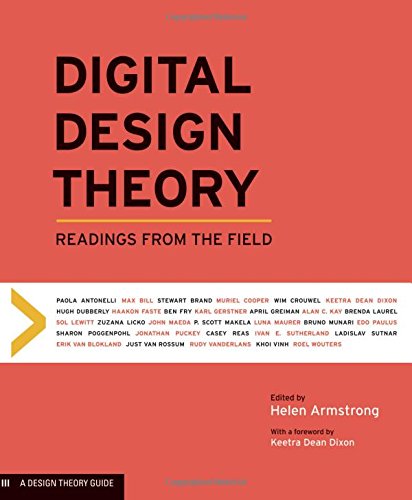 Digital Design Theory by Helen Armstrong
Digital Design Theory by Helen Armstrong
Digital Design Theory, a companion piece to Armstrong’s Graphic Design Theory, brings together an impressive collection of fundamental writings from the 1960s to current day that explores how computation has changed the discipline of design. In this book, Armstrong asks the question, “How did we get here?” Each of the essays, by notable figures such as Sol LeWitt, Rudy VanderLans, and Paola Antonelli, help Armstrong to answer the question and allow the reader to understand more about a profession that has changed dramatically in the last half-century.
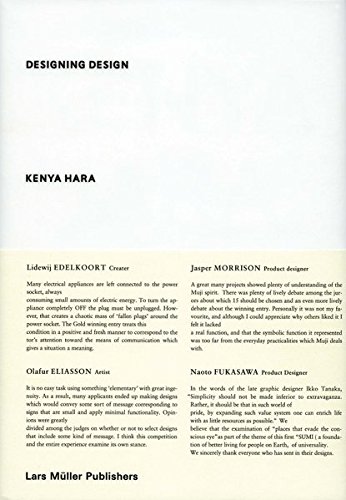 Designing Design by Kenya Hara
Designing Design by Kenya Hara
Designing Design starts off with the statement “verbalizing design is another act of design.” The book is broken into multiple sections: “Re-Design,” “Haptic,” “Senseware,” “White,” “Muji,” “Viewing the World from the Tip of Asia,” “Exformation,” and “What is Design.” Each section explores numerous examples of the subject at hand and places it into a greater context. While not specifically written for educators, this book is an inspiring work that altered how I approach the discipline.
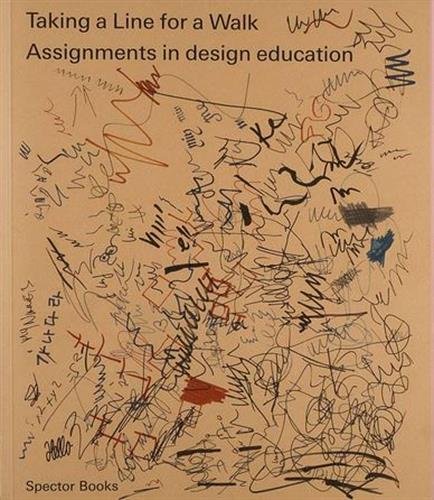 Taking a Line for a Walk: Assignments in Design Education, edited by Nina Paim and Emilia Bergmark
Taking a Line for a Walk: Assignments in Design Education, edited by Nina Paim and Emilia Bergmark
Based upon work exhibited at the 2014 International Biennial of Graphic Design in Brno, Czech Republic, this compendium assembles nearly 300 historical and contemporary design assignments, and focuses on the role of language in the development of (and evolving approaches to) graphic design instruction.
 Developing Citizen Designers by Elizabeth Resnick
Developing Citizen Designers by Elizabeth Resnick
“The aim of this book is to enable students, educators and designers in the early stages of their careers to learn and practice design in a socially responsible manner. It responds to the rise of academic debate and teaching in the areas of social design, sustainable design, ethical design and design futures.”
—Bloomsbury Publishing
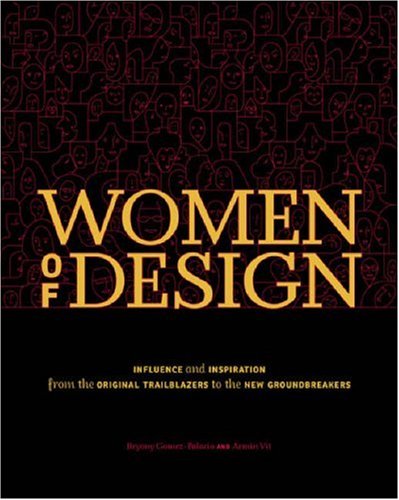 Women Of Design: Influence And Inspiration From The Original Trailblazers To The New Groundbreakers by Bryony Gomez-Palacio and Armin Vit
Women Of Design: Influence And Inspiration From The Original Trailblazers To The New Groundbreakers by Bryony Gomez-Palacio and Armin Vit
This book serves as a great addition to traditional canons of design history which often overlook contributions from influential women. The book is divided into three groups: groundbreakers, pathfinders, and trailblazers and includes such names as Meredith Davis, Robynne Raye, and Irma Boom.
 A Natural History of the Senses by Diane Ackerman
A Natural History of the Senses by Diane Ackerman
An oldie but goodie that’s relevant for everyone—especially designers and educators. I read this book while on vacation and couldn’t put it down. From music, to food, to kissing, to icebergs in Antarctica, the book explores how we experience the world through our five senses. Inspiring and easily digestible.
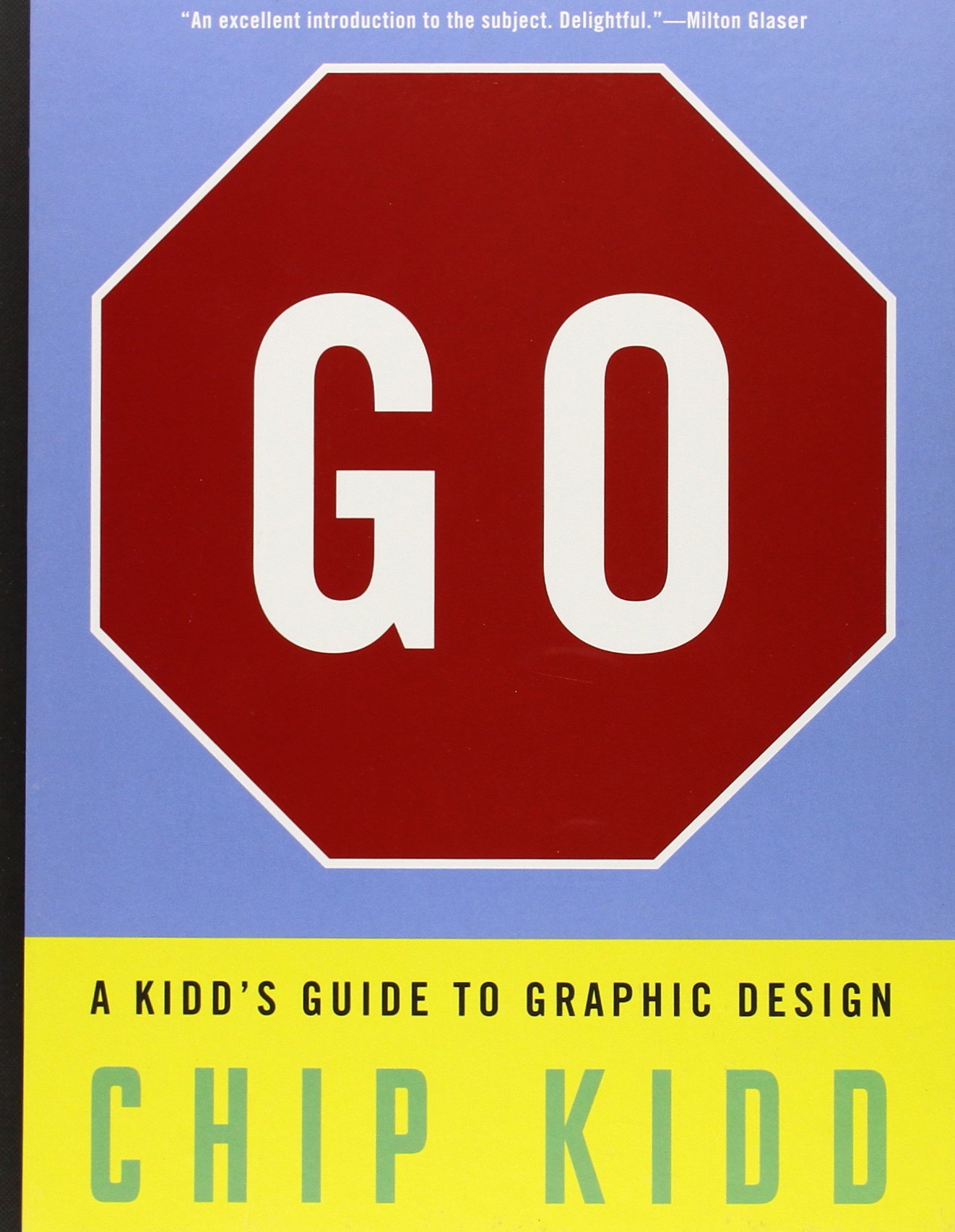 Go: A Kidd’s Guide to Graphic Design by Chip Kidd
Go: A Kidd’s Guide to Graphic Design by Chip Kidd
An accessible starting point to demonstratively expose younger students (10 and up) to design concepts and terminology.
 Fully Booked / Ink on Paper: Design and Concepts for New Publications, edited by Matthias Hübner, Robert Klanten, and Andrew Lowosky
Fully Booked / Ink on Paper: Design and Concepts for New Publications, edited by Matthias Hübner, Robert Klanten, and Andrew Lowosky
A visually engaging publication loaded with examples of innovative printed work from contemporary designers. Print is alive and well in this beautifully produced book. A fantastic resource for anyone working with print and typography.
 The Art of Immersion: How the Digital Generation Is Remaking Hollywood, Madison Avenue, and the Way We Tell Stories by Frank Rose
The Art of Immersion: How the Digital Generation Is Remaking Hollywood, Madison Avenue, and the Way We Tell Stories by Frank Rose
A primer for experience design, this engaging book explores the impact of technology on storytelling and mainstream culture.
 Leap Dialogues: Career Pathways in Design for Social Innovation, edited by Mariana Amatullo with Bryan Boyer, Liz Danzico and Andrew Shea
Leap Dialogues: Career Pathways in Design for Social Innovation, edited by Mariana Amatullo with Bryan Boyer, Liz Danzico and Andrew Shea
The broad and well-edited content of this book is broken down into three groups of articles that, in distinct ways, address the changing roles that design plays in society and across the global marketplace. Lead editor Mariana Amatullo writes, “This book is about WHY these changes are happening, WHAT skills are needed to stay relevant, and HOW new practices are emerging.”
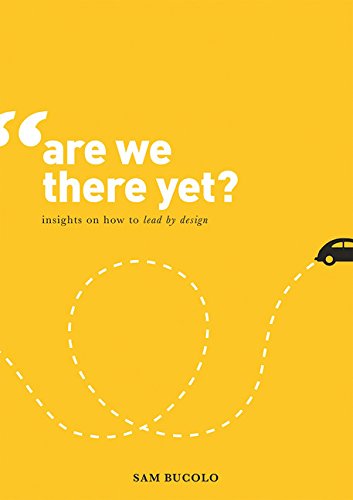 Are We There Yet?: Insights on How to Lead by Design, by Sam Bucolo
Are We There Yet?: Insights on How to Lead by Design, by Sam Bucolo
This book outlines the variety of roles that design can play as an innovation driver within and around small- to medium-sized enterprises (“SMEs”). Bucolo effectively presents frameworks and methods for designers and their collaborators to help SMEs prepare “for the strategic renewal they need to undertake to remain competitive in a new economic construct.” As SMEs have become more important than ever to local, regional and national futures, the new models of design-led innovation that are articulated in this easy-to-digest offering can help them remain relevant and competitive in today’s rapidly changing economic conditions.
 Design Elements, Form & Space: A Graphic Style Manual for Understanding Structure and Design by Dennis Puhalla
Design Elements, Form & Space: A Graphic Style Manual for Understanding Structure and Design by Dennis Puhalla
This book is an excellent primer for learning the fundamental foundations of visual thinking and design composition decision making. Puhalla introduces how to apply elements to images and type to create balanced layouts. This text uses numerous examples that utilize drawings, conventional color harmonies, and diagrams, along with practical examples, that explain how their application affect form and space.
Observed
View all
Observed
By The AIGA Design Educators Community
Related Posts

Sustainability
Delaney Rebernik|Books
Head in the boughs: ‘Designed Forests’ author Dan Handel on the interspecies influences that shape our thickety relationship with nature

Design Juice
L’Oreal Thompson Payton|Books
Less is liberation: Christine Platt talks Afrominimalism and designing a spacious life

The Observatory
Ellen McGirt|Books
Parable of the Redesigner
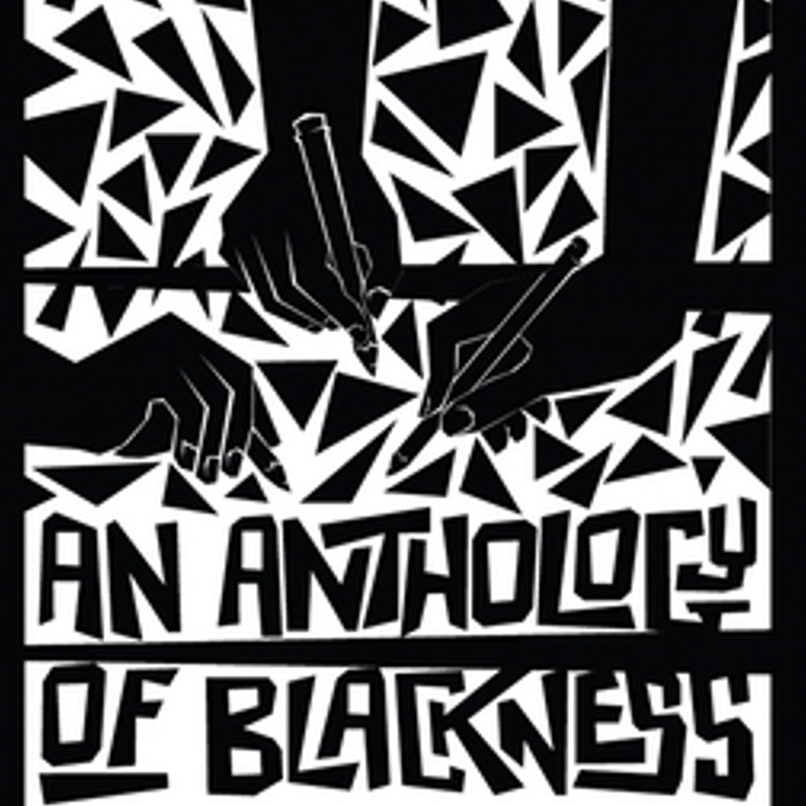
Books
Jennifer White-Johnson|Books
Amplifying Accessibility and Abolishing Ableism: Designing to Embolden Black Disability Visual Culture
Related Posts

Sustainability
Delaney Rebernik|Books
Head in the boughs: ‘Designed Forests’ author Dan Handel on the interspecies influences that shape our thickety relationship with nature

Design Juice
L’Oreal Thompson Payton|Books
Less is liberation: Christine Platt talks Afrominimalism and designing a spacious life

The Observatory
Ellen McGirt|Books
Parable of the Redesigner

Books
Jennifer White-Johnson|Books
